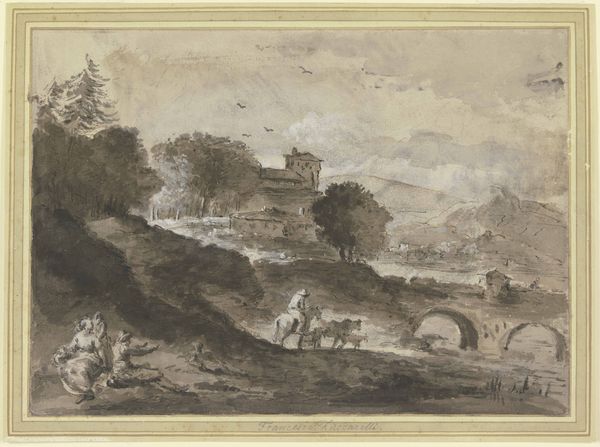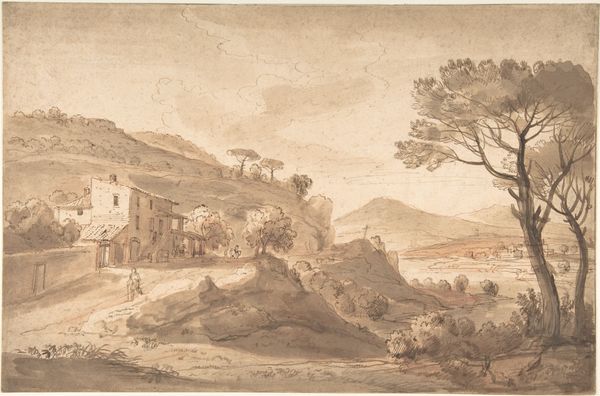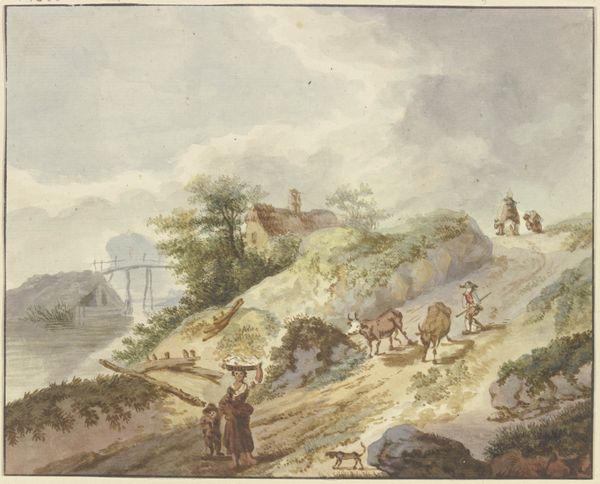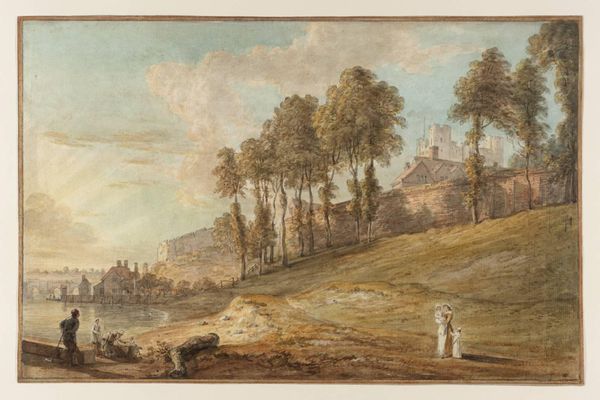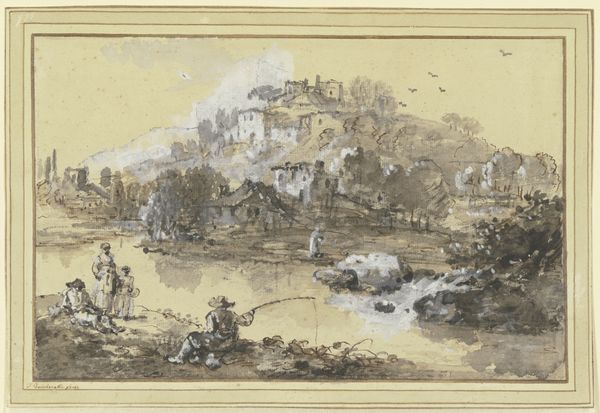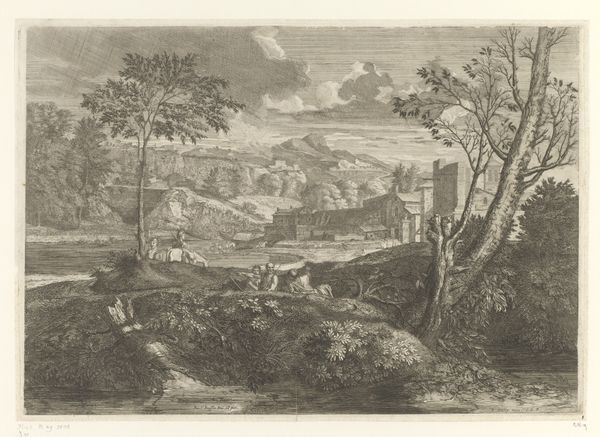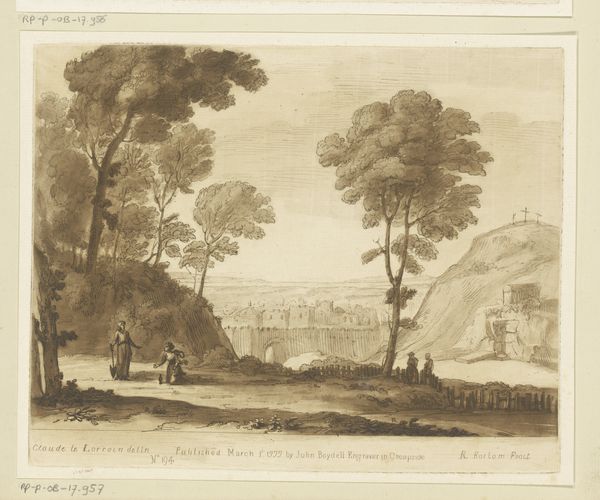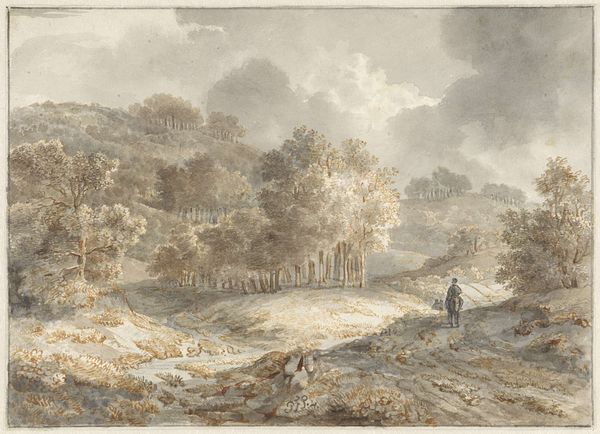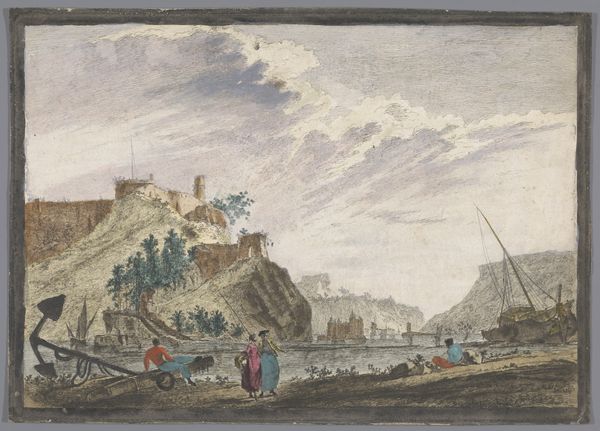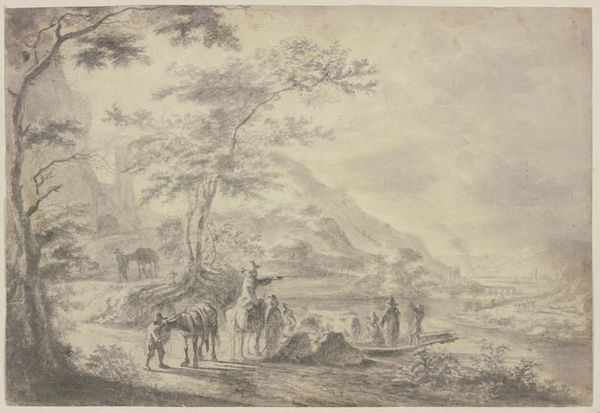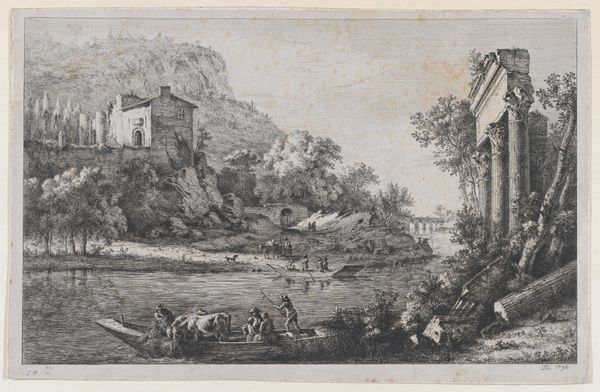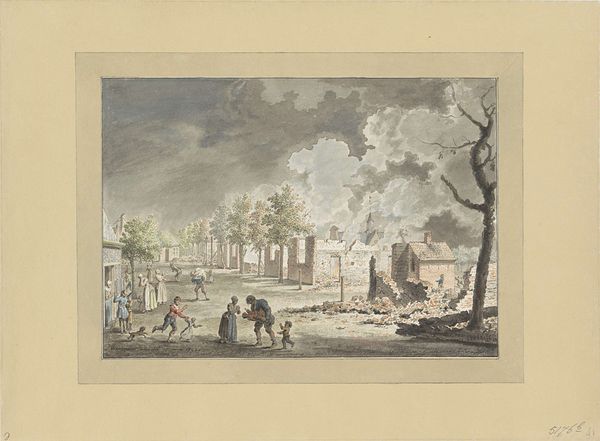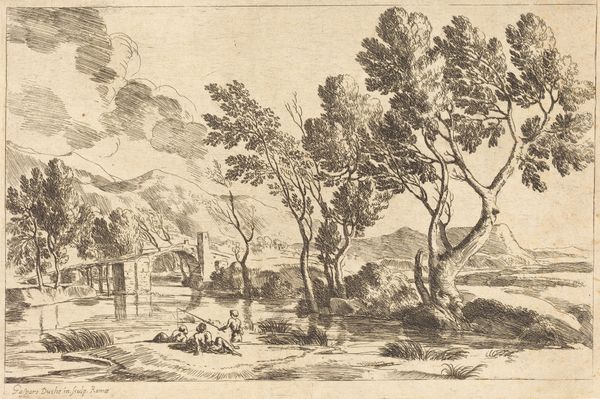
Classical Landscape: A Town and a Mountain by the Coast 1729 - 1788
0:00
0:00
Dimensions: 12 1/16 x 18 3/16 in. (30.6 x 46.2 cm)
Copyright: Public Domain
Curator: This is Francesco Zuccarelli's "Classical Landscape: A Town and a Mountain by the Coast," created sometime between 1729 and 1788. It employs tempera and watercolor on paper. What’s your first impression? Editor: A sense of melancholic beauty pervades, don’t you think? The muted tones lend it a feeling of a world fading. I'm struck by the iconic structures. Curator: Indeed. Zuccarelli, immersed in the Italian Renaissance and Baroque traditions, created landscapes which really romanticize country life. Think of it within the broader societal context, as aristocratic elites retreated into pastoral fantasy while ignoring socio-economic disparities. Editor: Yes, and consider how that yearning for an idealized past manifests. See the ruined towers, almost wistful reminders of power structures now decayed. They stand in stark contrast with the daily routines of villagers, which feel very much "lived in," suggesting life goes on, empires or not. Curator: It is a powerful juxtaposition, this tension between the ruined remnants of past power and the continuation of everyday existence, that challenges viewers to acknowledge the impermanence of structures, especially socio-political structures, vis-a-vis human experience. Editor: The way the mountain looms is also significant. In its imposing height, its misty vagueness, it functions as this constant silent watcher over fleeting lives, embodying enduring geological time. That vertical axis feels vital here. Curator: A nature indifferent to human drama. That certainly connects to contemporary anxieties. Zuccarelli’s imagery speaks to power, class, and temporality with remarkable potency, still prompting questions regarding sustainability and resilience in contemporary landscape. Editor: It certainly does offer an invitation to reflect on how civilizations leave their mark while natural cycles unfold. I now view this through a renewed lens. Curator: Absolutely, considering those legacies opens new lines of critical enquiry, reframing these aesthetic choices. Editor: I appreciate you contextualizing the symbolic decay alongside the resilience of ordinary lives depicted.
Comments
No comments
Be the first to comment and join the conversation on the ultimate creative platform.
